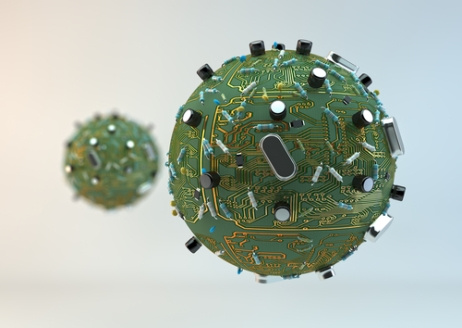Binary Bugs

Ian Blenkharn explores how the study of infectious diseases has lessons for the prevention of attacks on computers and smartphones
The Biologist Vol 60(3) p8
A sniffle, a sneeze and a headache are early signs of a common cold. Do we then take to our bed, or carry on regardless and pass the infection to work colleagues and others? Basic hygiene measures can restrict the spread of a virus but we are not always successful – generally, we do not try hard enough.
Computer viruses are no different. Our basic computer hygiene standards are lax. At-risk files are exchanged via email, file sharing, smartphones, and other unprotected storage devices. This, combined with the use of websites compromised with malicious code, conspires to create a persistently high risk of infection.
Like biological viruses, computer viruses also exhibit precise target specificities, with a closely defined vector and host range, variable latent period and virulence, marked polymorphism and the ability to respond to attacks (by antivirus software), as well as a demonstrable ‘pathology’ to devices or networks. The paradigm is clear, the damage extensive...
Want to continue reading this article?
Click to login.


